Musée du Pays Sarrebourg
Musée du Pays de Sarrebourg, rue de la Paix 57400 SARREBOURGTél : 03.07.08.08.68 E.Mail : musee.sarrebourg@wanadoo.fr
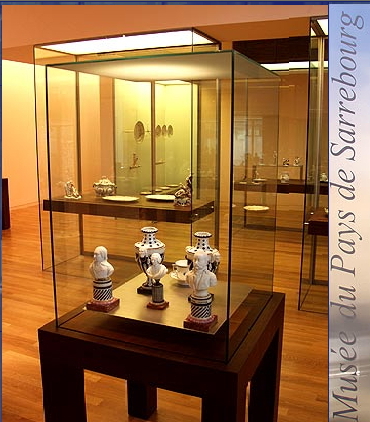 |
COLLECTION
NIDERVILLER
One
of the oldest producers of faience in Lorraine and
the only one to produce porcelain.
18th
Century
NIDERVILLER FAIENCE
 |
Period of Baron de Beyerle
1748 - 1773
did not begin to thrive until 1748 when the Baron Jean-Louis de Beyerle,
a friend of Pierre Hannong at Strasbourg and
treasurer of the Royal Currency of Strasbourg, bought the domain of Niderviller.
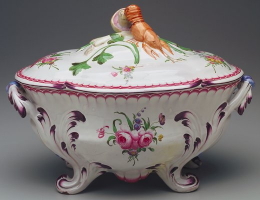 |
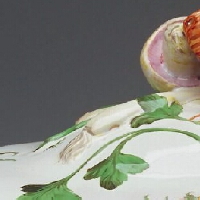 |
 |
Tureen 1755, Minneapolis Institute of Arts
Enthusiastic and ambitious, Beyerle surrounded himself with renowned
artists and expert chemists
to create a luxurious faience intended for the
aristocracy, the dignitaries of the church, and the rich bourgeoisie.
It was thus, in 1758, that sumptuous dinner services of baroque extravagance
were first produced establishing the reputation of the Manufacture.
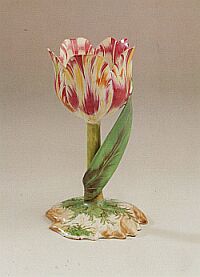 |
Production
is said to have begun as a fashionable hobby for Beyerle and his friends.
Their objective was to create faience of the best aesthetic quality,
with scant attention paid to expense... a sort of boutique faience factory
for themselves.
Their output was small, so, early examples from the Beyerle period are
rare to find.
Most are already in museums, such as Sarrebourg near Niderviller,
and the National Ceramics Museum at Sevres.
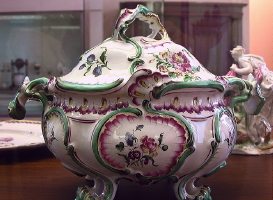 |
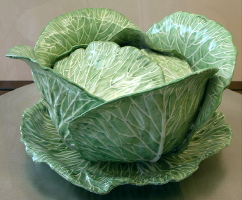 |
Terrines c. 1760,, Musée du Pays Sarrebourg
Trompe L'oeil
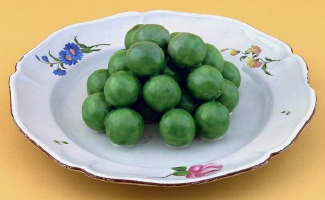 |
Plate of Melon Balls, 1770 - 1793 Minneapolis Institute of Arts
Trompe L'oeil was much in vogue during the 18th century.
The faience factory of Strasbourg was particularly known for its work in trompe L'oeil.
Petit Feu
“Petit feu” (small fire), a difficult and expensive firing technique
which first allowed for the use of pastel enamels on faience,
was discovered a bit earlier at nearby Strasbourg, by the Hannong factory there.
The brilliant pinks were created with a pigment which contained gold.
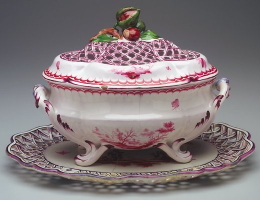 |
1770 - 1775, Minneapolis Institute of Arts
Throughout its early history, Niderviller faience was distinguished particularly for its
great table services painted with floral decorations, using the full range of color;
simple and undulating vases, coffee pots, drageoirs or vegetable dishes in rococo style;
baskets dressed with braided handles, branches, fruits and flowers;
bowls enriched by contrasting colors and threads of gold, in imitation of basket making;
pieces imitating wood grains with engraving and trompe l'oeil;
remarkable statuary or figurines and groups sculpted with a marvelous smoothness,
and a world of the most varied form.
(On-line Ref. aparzviller)
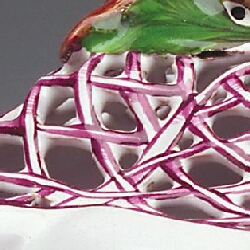 |
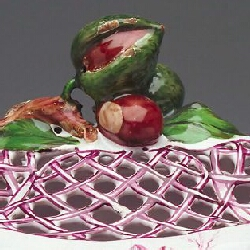 |
 |
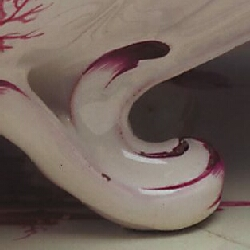 |
"Fleurs Fines"
The best of the floral decorations was referred to as "fleurs fines."
(The term means “fine flowers” and refers to the creation by free-hand painting
of complex, realistic floral designs on faience.)
The exquisite designs for “fleurs fines” were taken from the botanical engravings of the period.
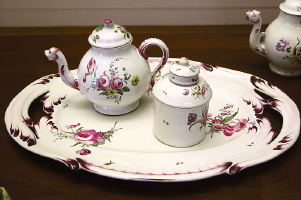 |
Tea Service c. 1770, Musée du Pays Sarrebourg
The following two plates from my own collection are examples of "fleurs fines."
If you will click to enlarge each image, you will see the incredible details in the painting.
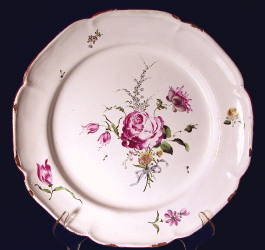 |
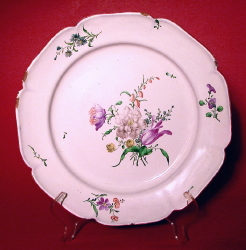 |
1765 - 1770, Personal Collection
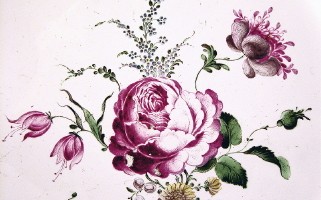 |
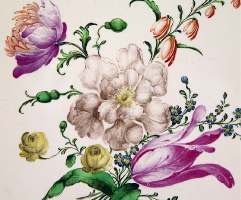 |
"Fleurs Contournees"
The two plates on the left below were created in the simpler technique called "fleurs contournees,"
in which the contours of the flowers were first outlined with a punch through a perforated paper pattern.
This technique would later lead to the use of stencils, which further simplified the decoration.
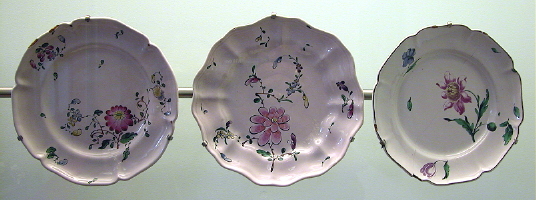 |
1755 - 1760, Musée du Pays Sarrebourg
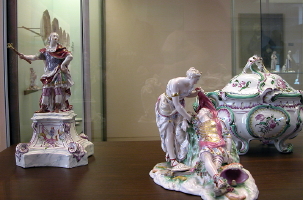 |
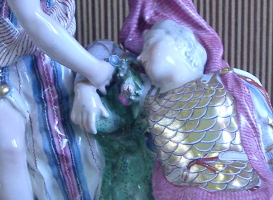 |
1765 - 1770, Musée du Pays Sarrebourg and National Ceramics Museum, Sevres
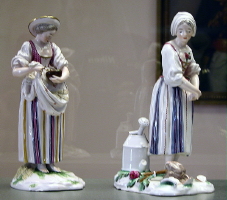 |
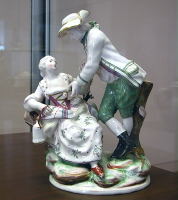 |
1765 - 1770, Musée du Pays Sarrebourg
Faience
de l'Est
Sometimes referred to as faience de l'est (faience of the east),
works in petit feu were the specialty of the eastern region of France;
and the Niderviller factory was one of the best.
Some of the workers at Niderviller came from the Strasbourg faience
factory,
after coming to France from nearby Germany.
They knew of the Deutsche Blumen
(German Flowers) decorations of Meissen porcelain
and set about to create similar designs on faience.
The remarkable faience of this period is the Golden Age of French Faience
in Alsace-Lorraine.
France would not produce genuine hard-paste porcelain for a few more
years.
Period of Count de Custine
1773 - 1793
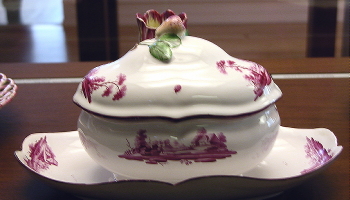 |
Sugar Bowl c. 1775, Musée du Pays Sarrebourg
In
1773, the Faiencerie was ceded to the Count de Custine.
A man of taste, an entrepreneur and an innovator, Custine,
aided by talented chemist Francois Lanfrey,
would give a new spirit to the production through the diversification
of materials, decorations and shapes.
His creations, known for their refinement and originality, would contribute
to the prestige of the factory.
The reign of Count Custine at Niderviller roughly coincides with the
reign of Louis XVI.
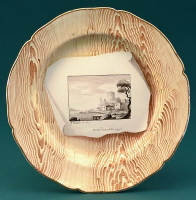 |
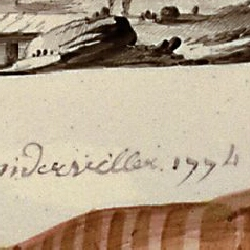 |
1774, Minneapolis Institute of Arts
 |
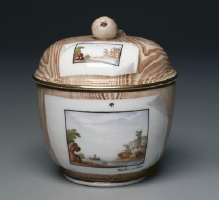 |
1780, Cleveland Museum of Ar
Though a sympathizer with the French Revolution and a military participant in the American Revolution,
on August 29, 1793, Custine was guillotined.
(His failure in Napoleon's campaign of 1793 led to accusations of treason, and he was guillotined.)
It was Lanfrey who saved the factory when it was to be sold as national property.
From then on, Lanfrey gave free reign to his creative genius,
definitively marking his place in the art and history of faience in the Lorraine region.
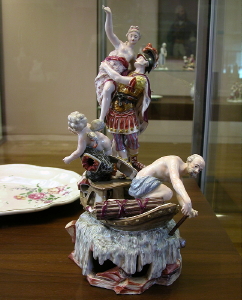 |
Click
image to enlarge.
1770
- 1780,
Musée du Pays Sarrebourg
Continued...
Click
here